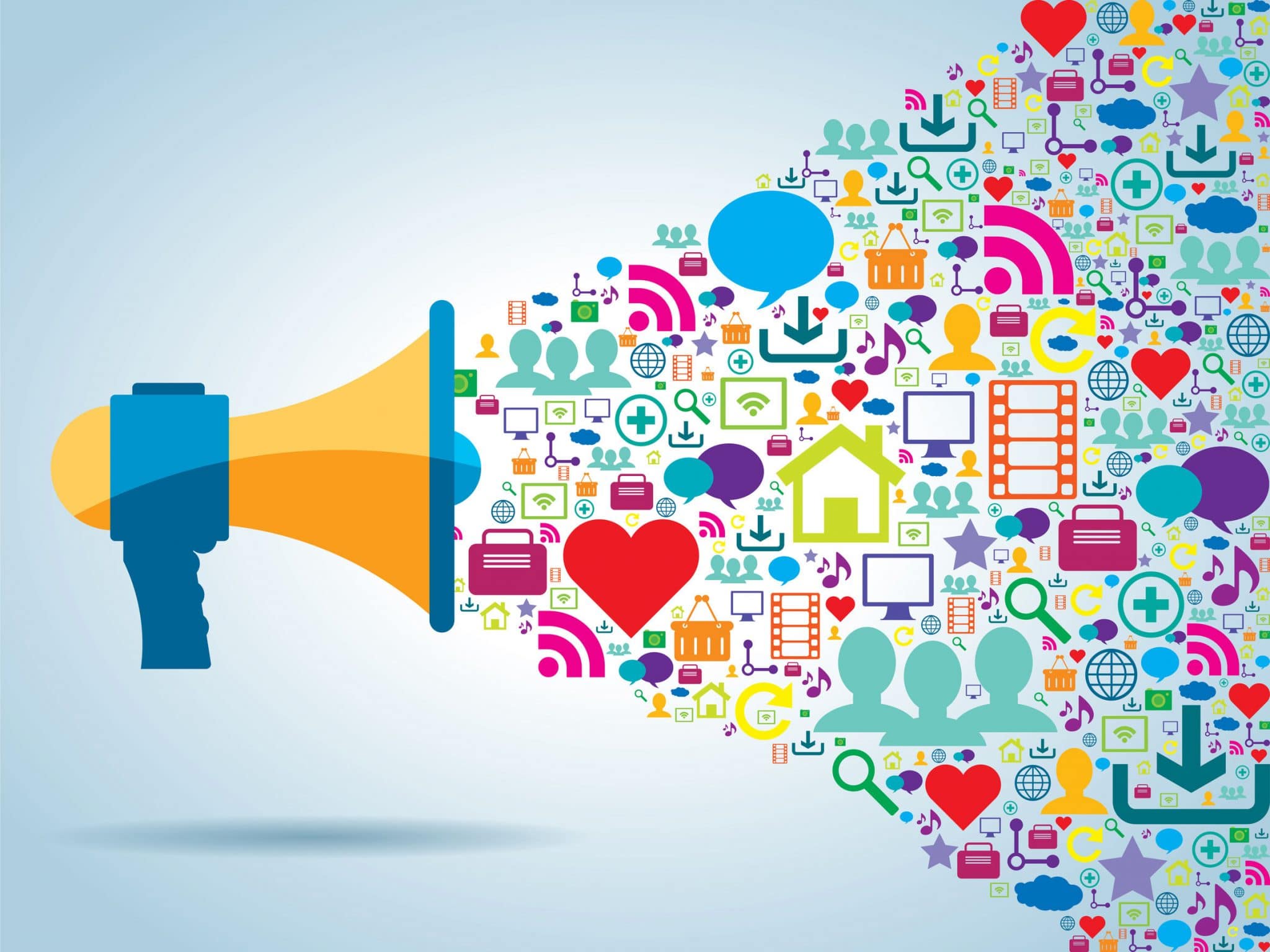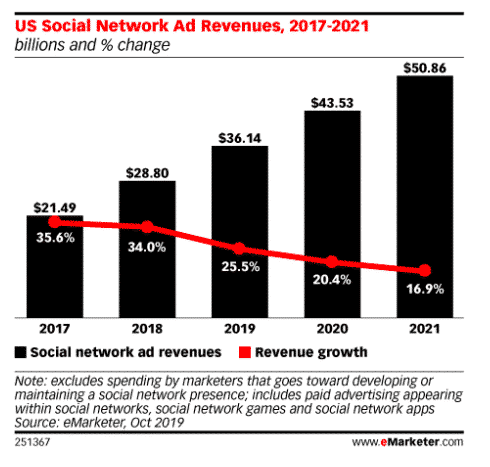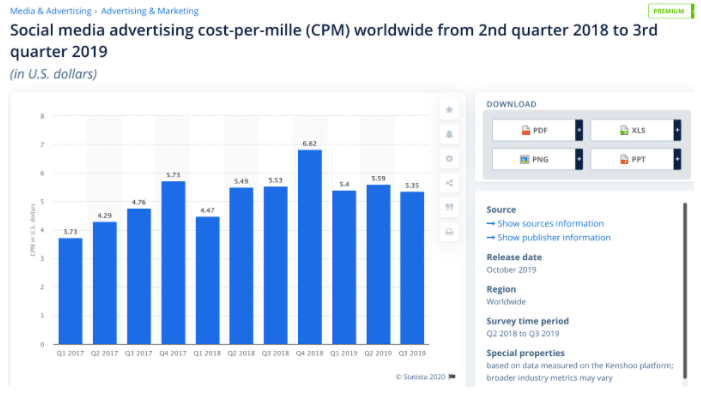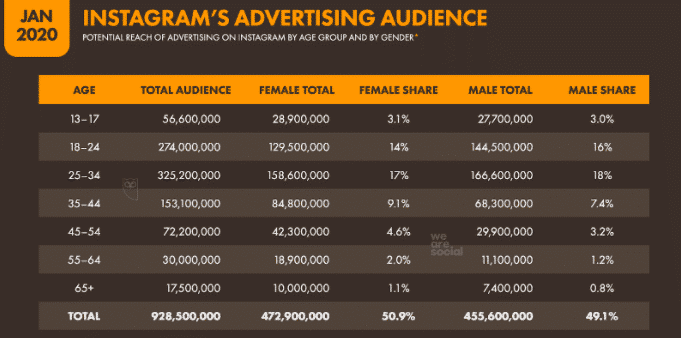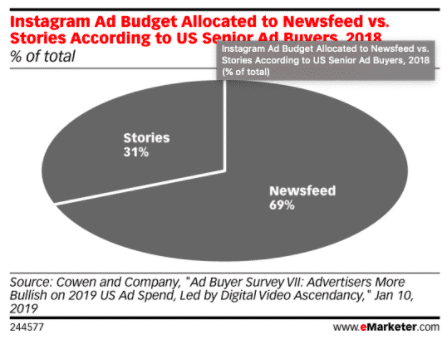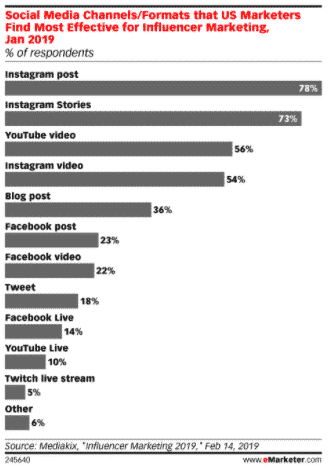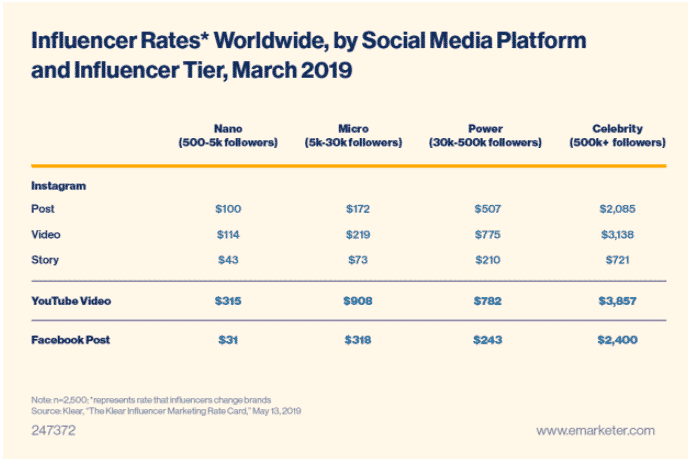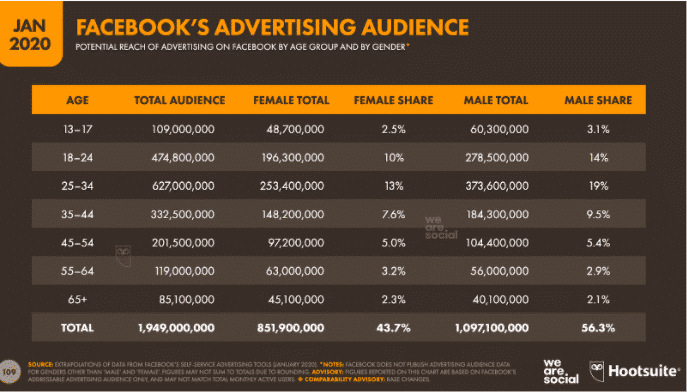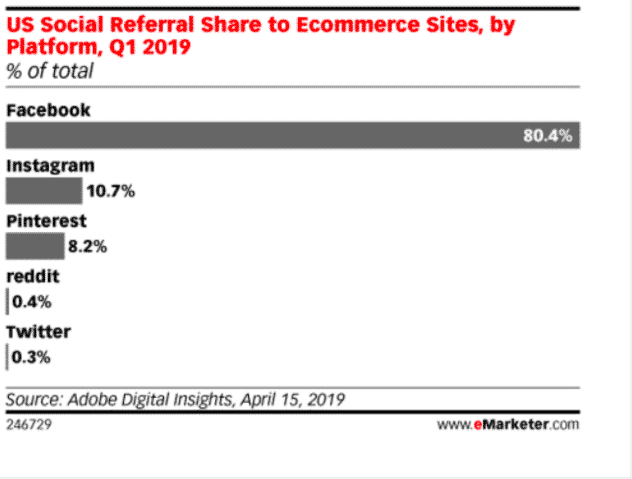Attempting to resolve where to concentrate your social media advert spend in 2020? We’ve collected the most recent social media advertising statistics—platform by precious platform—to get you began.
Social media adverts aren’t just for consultants and consultants anymore, and almost no one is getting by on organic alone. Use these stats to get caught up on the state of paid social: it’s your first step in direction of better viewer targeting and bumping up that ROI.
Let’s dive in.
General social media advertising statistics
1. Social media advert spending is forecast to increase by 20% to $43 billion USD in 2020
Technically, development is slowing, according to eMarketer. Why? Probably a confluence of factors—cresting social saturation being one among them.
Whereas this would possibly mean less money for Facebook shareholders, it’s most likely good news for brands competing for advert views.
Source: eMarketer
2. As of late 2019, the worldwide average CPM is down 3%, year over year
Or, in regular human English: the average price brand pays for an advert to be seen by 1,000 folks on social media was $5.35 USD in late 2019. That is down from $5.53 in late 2018.
So, regardless of the annual Q4 bump—when advert costs rise as everyone tries to attract these holiday shopper eyeballs—on average, social advert costs have been comparatively stable since mid-2018.
Source: Statista
3. Social media advert impressions are up 20%, year over year
According to Statista, more people are watching advertisements. Statista suggests that this is due to the rise of video and Story format adverts, which generally do effectively with attracting impressions and engagement.
4. But average global social CTRs are down 30%, year over year
On the other hand, people are clicking less. Social clickthrough rates went from 2.6% in late 2018 to 2% in late 2019.
In accordance with Statista, this primarily impacts “traditional” forms of social advertising, but we’d say it impacts everybody with an aim to convert.
5. 52% of all online brand discovery still happens in public social feeds
Yes, Mark Zuckerberg says “the future is private,” however, public feeds aren’t in the grave by a long shot.
This quantity consists of both paid and organic posts. Which is an effective reminder that you simply still need those likes (or hearts, or thumbs) to maintain traction with the algorithm. (Any algorithm, all the algorithms, really.)
6. Weak social ads create an unfavorable emotional response in less than a second
By the time your viewer blinks, they’ve given your advert a Pass or a Fail.
In other words: don’t depend on money to make up for quality. In case you don’t need to be just another annoying brand ruining Instagram, you need a high-quality copy, CTAs, and visuals.
7. 72% of B2B marketers who use paid channels on-line use paid social
Over on the B2B side of things, marketers are usually satisfied with the social’s usefulness in their advert methods.
Naturally, we’ll dive deeper into this in the LinkedIn part, further on.
8. 27% of internet users say they find new products and brands through paid social ads
Back to the B2C side: paid social media adverts are the #4-way folks discover new merchandise, period. Like, in life, not just on-line. Social adverts are the runner-up after word-of-mouth, TV adverts, and search engines, in that order.
The percentage goes up for 16-24-year-olds: 31% of them say they discover new merchandise and brands via paid social adverts. (The chart in point #9 breaks this out further.)
9. 13% of internet users say that a “buy” button would enhance their likelihood of buying on social
This isn’t an impressive quantity. I mean, in case you don’t have a purchase button on your product posts, paid or organic, do take the time to add one. However, it’s not a silver bullet. We might want to slay the werewolf of low conversions another way. (Werewolf conservationists don’t @ me.)
On the plus side, 23% say a brand with high engagement (i.e., likes, comments) is more compelling to purchase from. Another reason to maintain working that engagement.
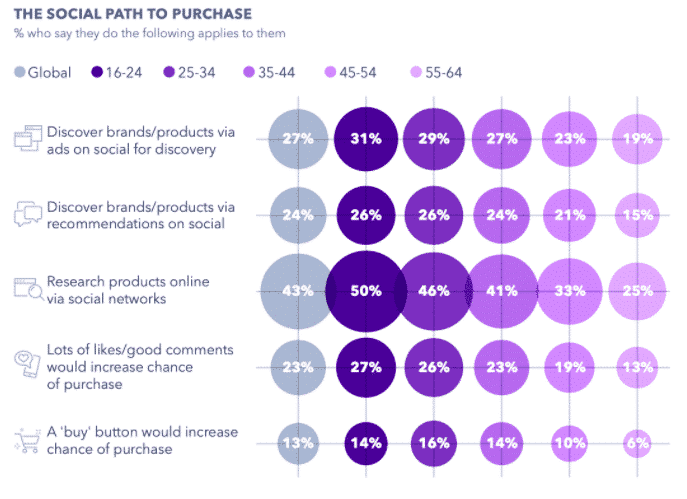
In case these stats have whetted your appetite for a primer on advertising on social, we have a complete guide right here.
Otherwise, read on for statistics for each distinctive, glowing star of a social media platform.
Instagram ad statistics
10. 928.5 million people can be reached by ads on Instagram
That’s an excessive percentage of the platform’s 1 billion-plus monthly active users.
Note that 655.8 million of those users are between 13 and 34 years old.
Source: Digital 2020
11. Instagram ads reach 15% of everyone over the age of 13, worldwide
The platform’s highest penetration rates by nation are Iceland, Kazakhstan, and Brunei at 60%. Turkey and Cyprus are 57%, then Sweden at #6 is 56%.
Be aware that the U.S. (43%) and Canada (40%) don’t even make the top 10 by this measure.
12. Instagram’s ad reach is up 5.7%
Some context: as brands and agencies fear in regards to the decline of organic reach, in June 2019, Instagram expanded their advert offerings to incorporate paid placement on the Instagram Explore page. This successfully elevated the number of adverts they can sell.
13. 92% of Instagram users say they’ve followed a brand, clicked on their website, or made a purchase after seeing a product/service on the platform
In other words, almost every single individual on Instagram is keen on trying out new brands that enchantment to them.
In the meantime, 84% of Instagram users say they’re open to discovering small/local brands, or new brands and merchandise.
14. 31% of Instagram ad budgets go to Stories
And 96% of US marketers plan to continue utilizing Stories ads in the future.
Source: eMarketer
15. 69% of a brand’s influencer budget goes to Instagram creators, on average
In comparison, YouTube creators are at #2, snagging 11% of brands’ influencer budgets.
This lines up with the truth that Instagram posts, Stories, and videos are 3 of the top 4 best codecs for influencer advertising, in accordance with a poll of marketers in the U.S.
Source: eMarketer
16. Video is the most expensive Instagram influencer format for brands, who pay an average anywhere between $114 USD and $3136 USD per post
Feed posts are the middle ground, and Stories are the most affordable format to buy. This makes sense, as video takes more skill and tools to get proper.
Source: eMarketer
Ready to run your personal Instagram adverts? Read our full guide here.
Facebook ad statistics
17. Facebook ads reach 1.95 billion of the platform’s 2.5 billion monthly users
In accordance with Hootsuite’s Digital 2020 report, that’s 32% of the world’s population (over the age of 13). Facebook is, sure, still the largest social platform on record.
Additionally, note that around 1.21 billion of these persons are between the ages of 13 and 34.
Source: Digital 2020
18. Facebook’s ad prices decreased 5% in Q4 2019, year over year
The corporate said in its Q4 2019 earnings call that this was primarily because of a rise in Stories adverts, which are cheaper on average. (4 million advertisers are using Stories; twice as many because of the year before.)
19. Facebook’s ad reach only grew 1% in Q4 2019.
Evaluate that to Instagram’s 5.7%. The platform has arguably hit its saturation point.
Bonus stat: Keep in mind that 42% of users took a Facebook break in 2019.
20. 80% of social referrals to eCommerce sites came from Facebook in Q1 2019
Regardless of potential saturation, turbulent PR, and headwinds from international privacy regulation, the platform’s scale is still delivering results for B2C advertisers. Instagram, by comparison, solely drove 10.7% of traffic.
Source: eMarketer
21. 26.7% of Facebook Pages use paid media
Keep in mind the truth that this quantity consists of all Pages: not simply brands and businesses. (140 million businesses use Facebook, now, for the record.)
It’s similar to my grandpa always mentioned: organic attain is great, in case you can get it.
Which brings us to our next point.
22. The average organic reach for a Facebook post is 5.17% of a Page’s likes, whereas the average paid to reach is 28.1% of total reach
These benchmarks might be useful whether you’re reviewing an individual advert’s efficiency or looking at your Facebook analytics as an entire.
23. Worldwide, the average Facebook user has clicked 12 adverts within the final 30 days
That number doubles in Romania and Israel, however, halves in Japan and India. Americans click on 18 adverts a month; Canadians 15.
Source: Digital 2020
24. Split testing ads improves cost-per-acquisition by 72%, according to Facebook
In other words: testing means you learn more about what your audience likes, whereas your social media advert gets cheaper.
So, why are marketers not A/B testing each advert they run in order to decrease prices and bump up ROI? (Due to we’re already overworked, obvi.)
No shame if this “extra” step continues to be on your to-do checklist: but let me simply slip your guide to split-testing social media ads.

